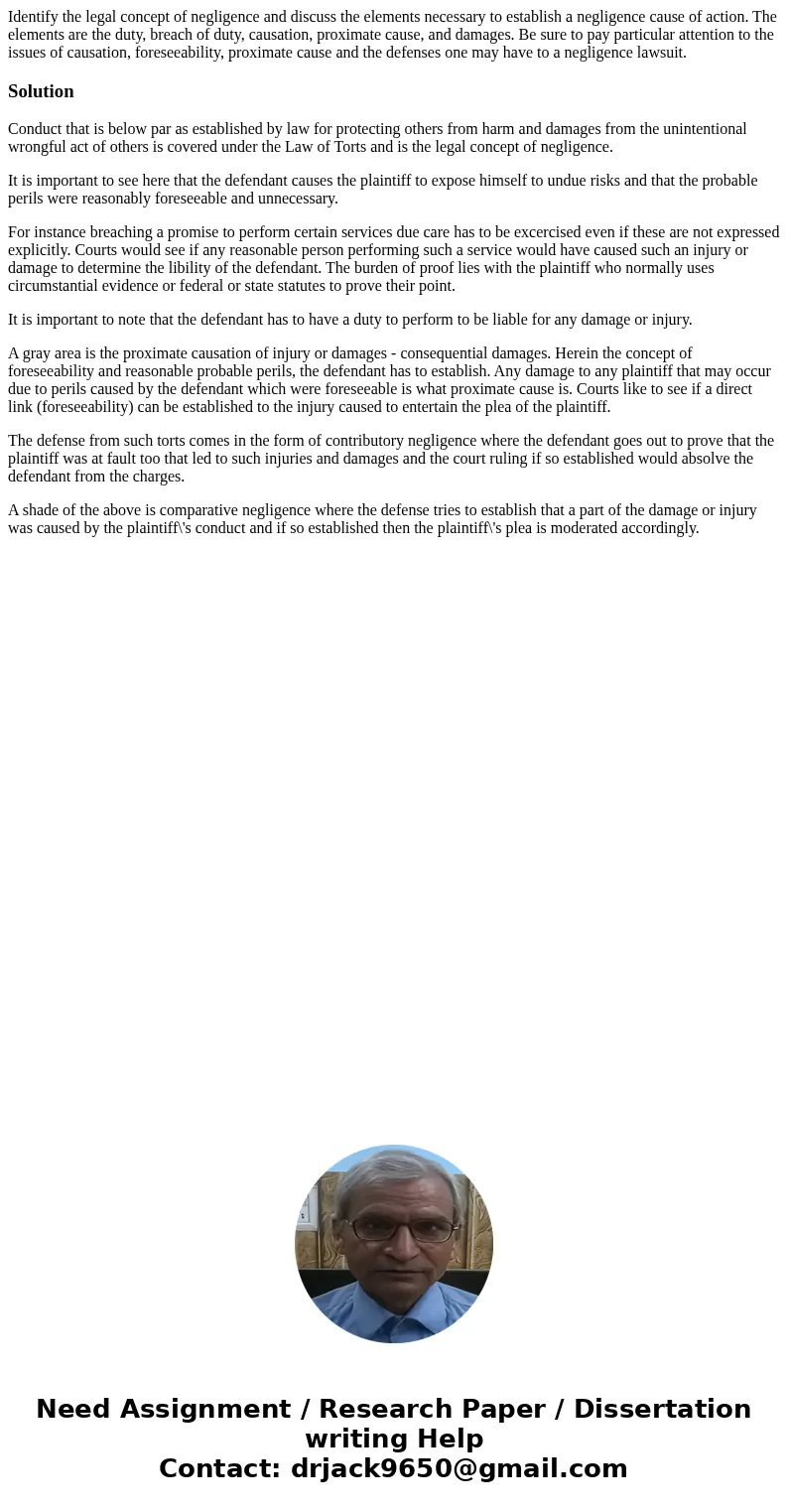Identify the legal concept of negligence and discuss the ele
Identify the legal concept of negligence and discuss the elements necessary to establish a negligence cause of action. The elements are the duty, breach of duty, causation, proximate cause, and damages. Be sure to pay particular attention to the issues of causation, foreseeability, proximate cause and the defenses one may have to a negligence lawsuit.
Solution
Conduct that is below par as established by law for protecting others from harm and damages from the unintentional wrongful act of others is covered under the Law of Torts and is the legal concept of negligence.
It is important to see here that the defendant causes the plaintiff to expose himself to undue risks and that the probable perils were reasonably foreseeable and unnecessary.
For instance breaching a promise to perform certain services due care has to be excercised even if these are not expressed explicitly. Courts would see if any reasonable person performing such a service would have caused such an injury or damage to determine the libility of the defendant. The burden of proof lies with the plaintiff who normally uses circumstantial evidence or federal or state statutes to prove their point.
It is important to note that the defendant has to have a duty to perform to be liable for any damage or injury.
A gray area is the proximate causation of injury or damages - consequential damages. Herein the concept of foreseeability and reasonable probable perils, the defendant has to establish. Any damage to any plaintiff that may occur due to perils caused by the defendant which were foreseeable is what proximate cause is. Courts like to see if a direct link (foreseeability) can be established to the injury caused to entertain the plea of the plaintiff.
The defense from such torts comes in the form of contributory negligence where the defendant goes out to prove that the plaintiff was at fault too that led to such injuries and damages and the court ruling if so established would absolve the defendant from the charges.
A shade of the above is comparative negligence where the defense tries to establish that a part of the damage or injury was caused by the plaintiff\'s conduct and if so established then the plaintiff\'s plea is moderated accordingly.

 Homework Sourse
Homework Sourse